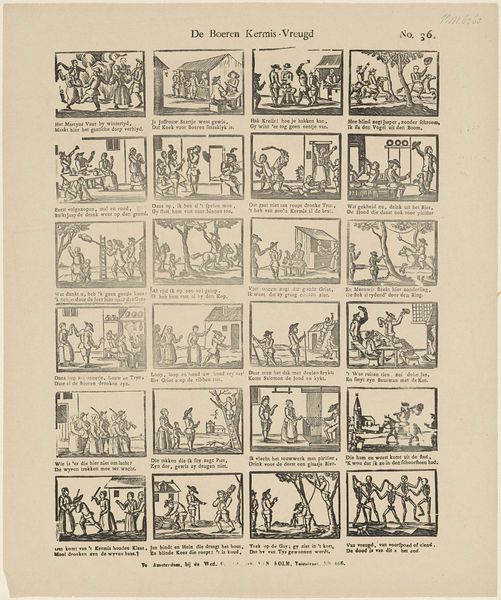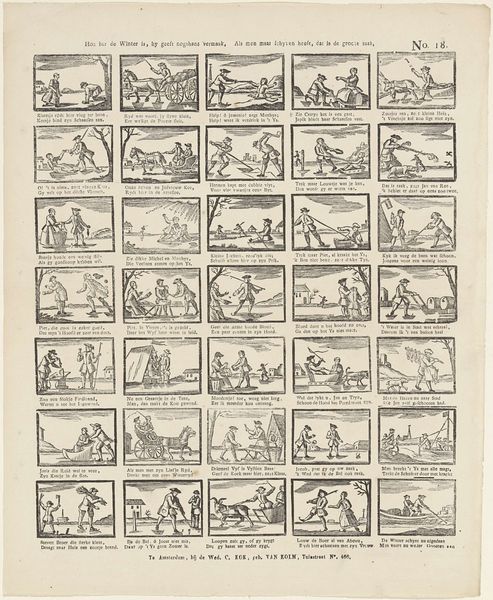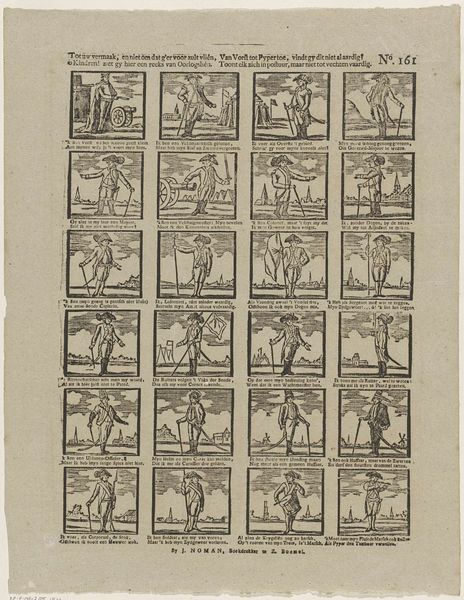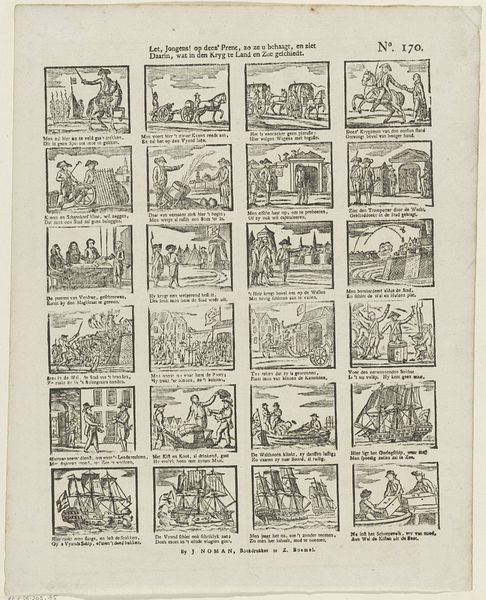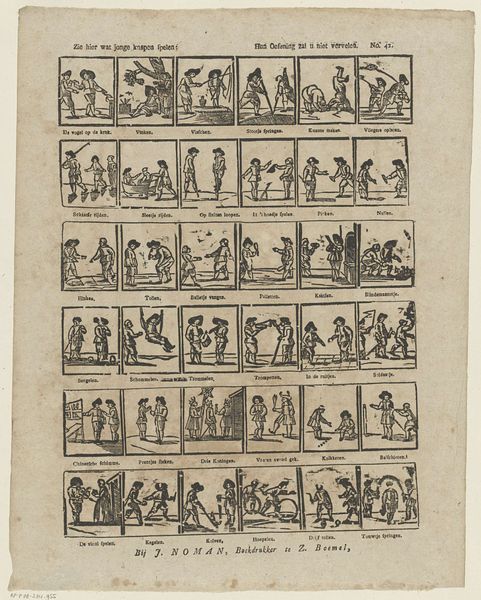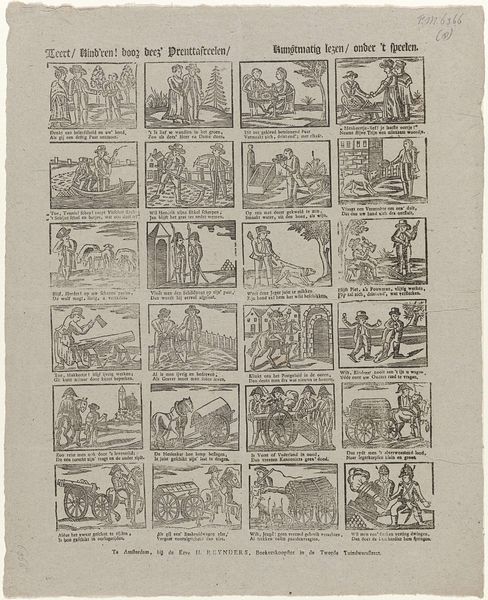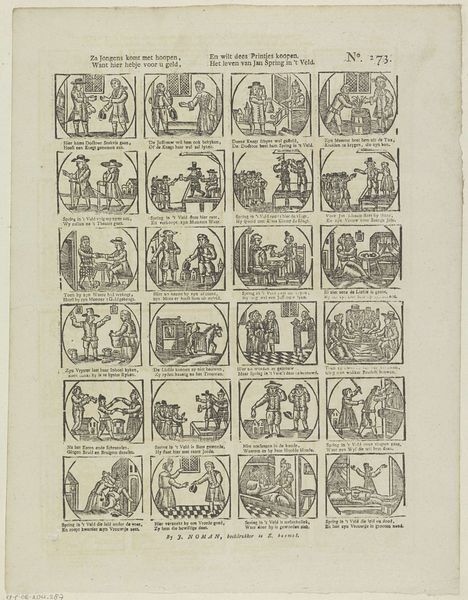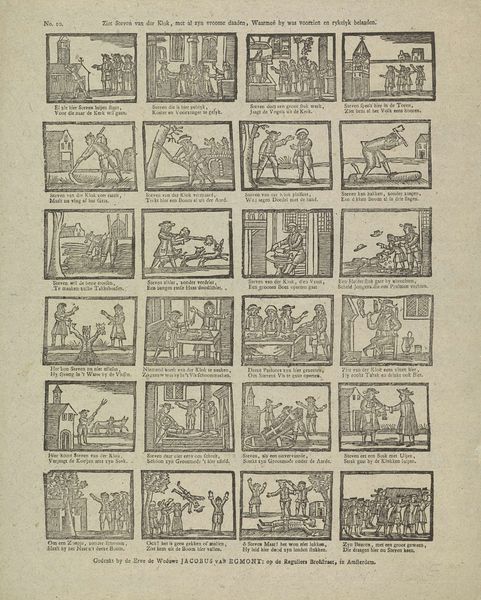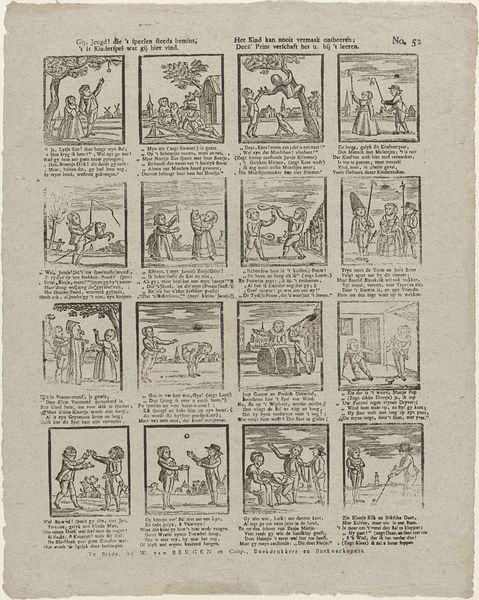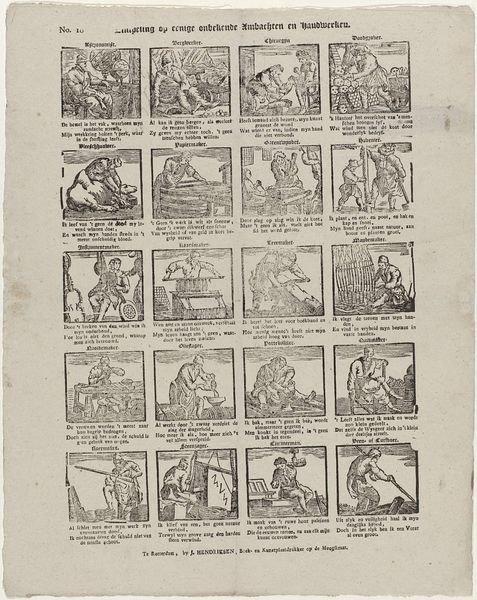
Jonkheid wilt gy spelen leeren / Kom met Cupido verkeeren / Want hy wint van ieder prys / Niemand is hem te wys 1842 - 1866
0:00
0:00
weduweckokvankolm
Rijksmuseum
Dimensions: height 386 mm, width 322 mm
Copyright: Rijks Museum: Open Domain
Curator: Here we have "Jonkheid wilt gy spelen leeren / Kom met Cupido verkeeren / Want hy wint van ieder prys / Niemand is hem te wys", an engraving from between 1842 and 1866, currently residing in the Rijksmuseum. A rather busy piece, isn't it? Editor: Yes, it's packed with little scenes, all featuring Cupid. It has an almost comic strip quality, or maybe like a sampler. What do you see in this work? Curator: The enduring power of certain archetypes! Cupid, or Eros, embodies desire and youthful folly. But notice how he’s presented here – not just as a divine figure, but engaging in everyday activities. He flies a kite, he cracks a whip, rides a goat – it's as if these little panels show the many faces of love. He represents this cultural fascination that has endured from antiquity, love visualized into our cultural memory! Editor: That’s a good point. He is everywhere, in every era, isn’t he? Does the choice of engraving medium impact that meaning for you? Curator: Definitely! Engravings like these allowed for wider dissemination of ideas and images. These scenes of love's games become accessible and shareable, solidifying Cupid's role within popular imagination. Notice also the almost instructional aspect - the prints bear text at the top explaining how this youthful cupid's pranks have the power to beat anyone, implying wisdom cannot protect someone. The idea is echoed at the bottom where text accompanies each scene. Editor: I didn't think about the distribution. Thank you so much! Now I am curious about other depictions of love and desire from this time period. Curator: Absolutely, keep digging into how our visualization of love through these figures have shifted across time! It speaks to deeper cultural changes.
Comments
No comments
Be the first to comment and join the conversation on the ultimate creative platform.
